Magellanic Penguin Biology
Magellanic Penguin Project | Magellanic Penguin Biology | Study Site | Meet Turbo
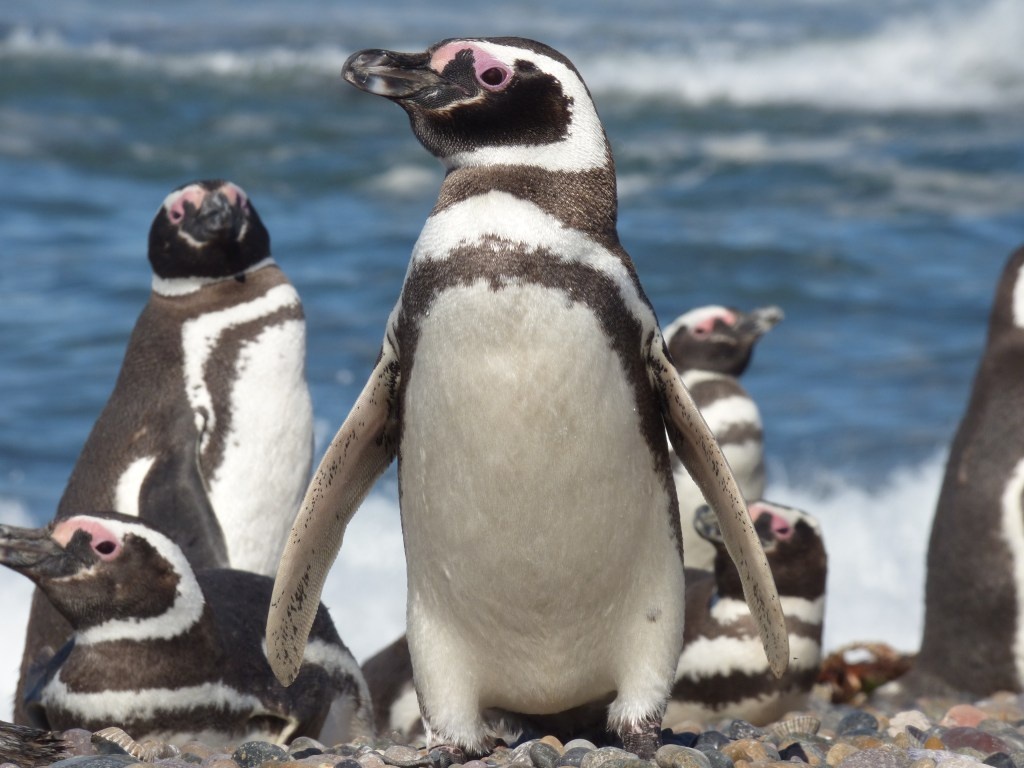
Common Name: Magellanic penguin
Species Name: Spheniscus magellanicus
IUCN Status: Near Threatened
Where are they found?
Magellanic penguins are found around southern South America, swimming in waters of the continental shelf, or breeding in colonies along the coast and islands. Adults spend about half the year at sea, seldom coming ashore, and half the year at breeding colonies in southern Argentina, southern Chile, and the Falkland/Malvinas Islands. The northern-most colonies are at about 40° S. Some colonies can be visited by tourists, such as the provincial reserve at Punta Tombo, Argentina, one of the largest colonies with well over 100,000 pairs.
Even during the breeding season, penguins spend a lot of time at sea because that is where their food lives. They fast whenever they are on land. Magellanic penguins in Argentina swim between 10 and 600 km from their colonies to forage during the breeding season, depending on the colony location, time of year, and how much food is available each year.
After the breeding season, chicks, juveniles, and adults leave the colonies and swim north.

What do they look like?
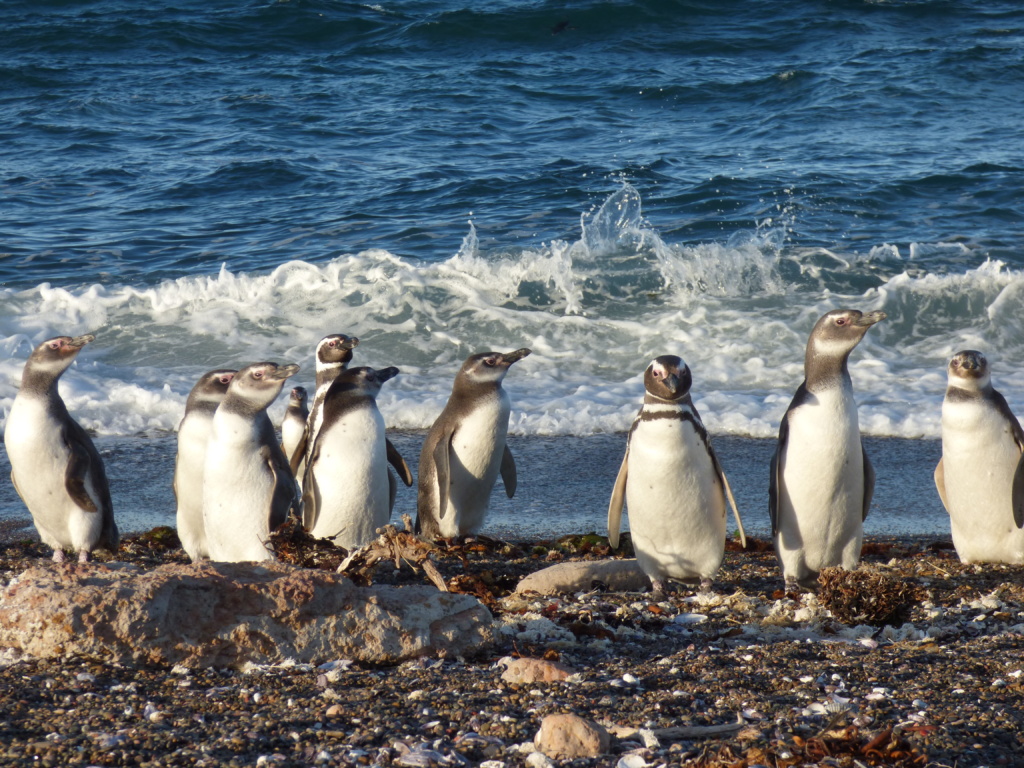
Juvenile Magellanic penguins have grayer plumage than adults and lack the black bands on the head, neck, and breast. Can you identify the adults and the juveniles?
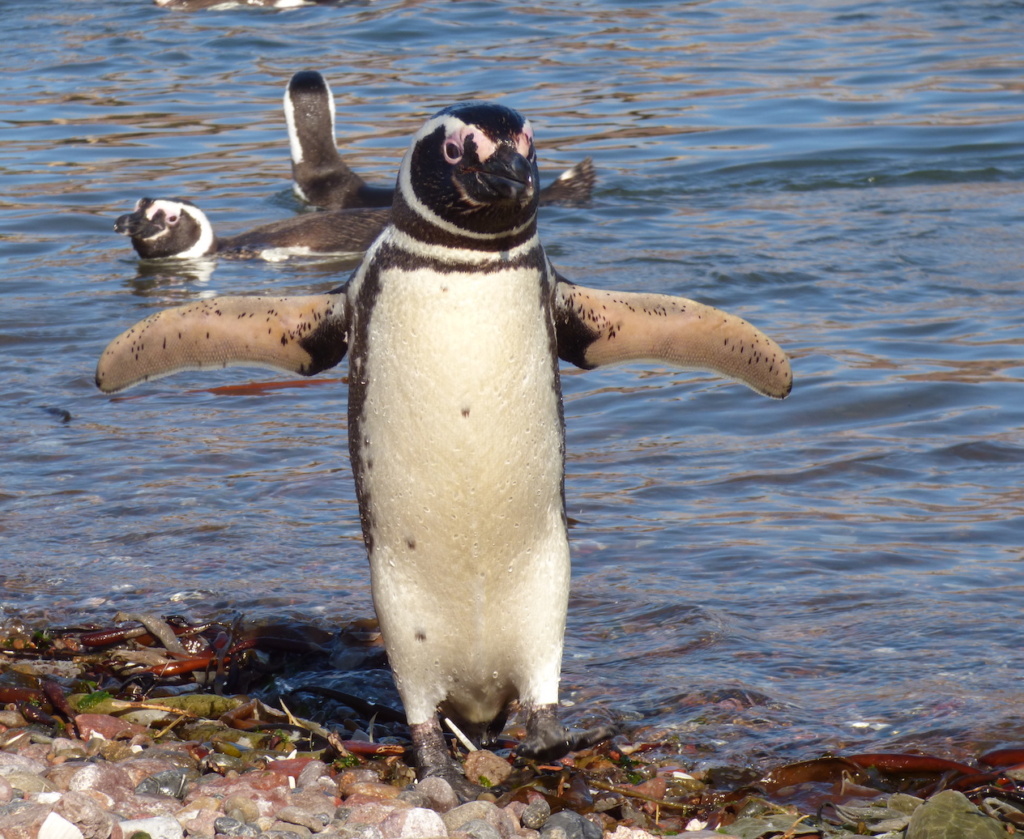
Magellanic penguins have 1) Hooked bill aids in catching fish, cephalopods, and crustaceans, 2) Flattened wings for swimming, and 3) Webbed feet they use as rudders.
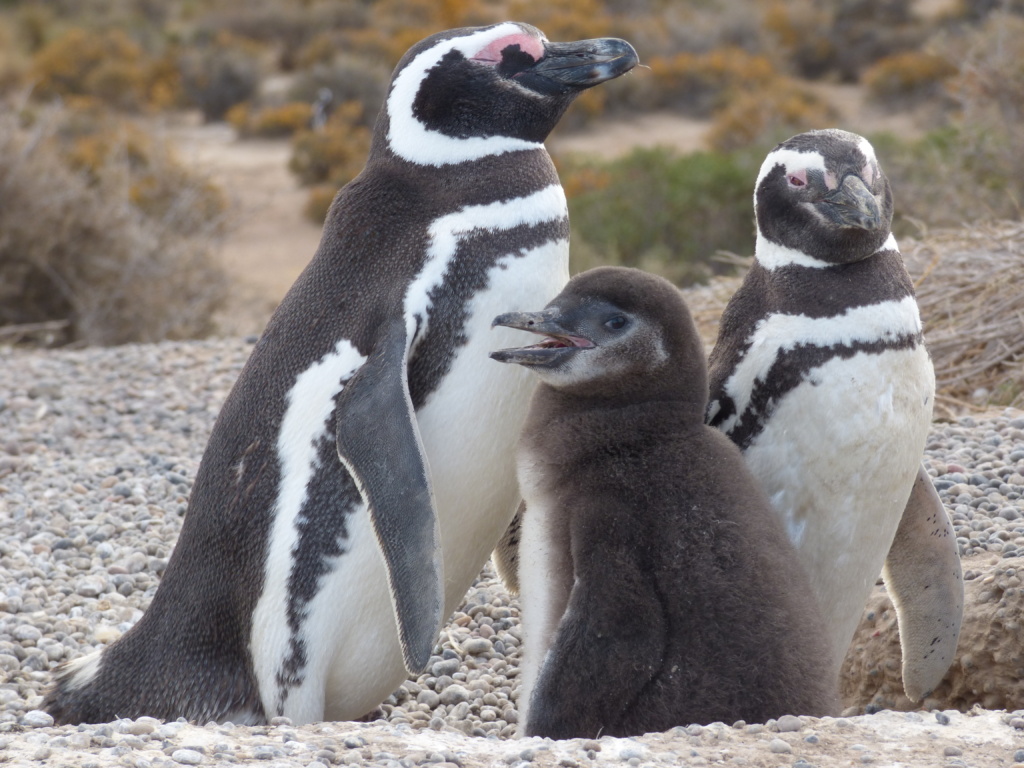
Chicks hatch covered with down. The down continues to grow and eventually juvenile plumage pushes out the down before fledging.

Males (left) are usually larger than females (right), weighing up to 20% more, and have thicker bills.
Breeding biology at Punta Tombo, Argentina
Adults arrive to breed in mid-September to mid-October. Males arrive before females–often, but not always–to the same nest they used in previous years. They nest in burrows that they dig, under bushes, or occasionally in a shallow scrape in the open. Males fix up their nests if needed–for example, a male may need to dig out a burrow that collapsed during winter rains. Males defend their nests against other males by fighting with bills and flippers, often drawing blood, but seldom causing serious injury. A female may chose to stay with the same mate from previous years or pick a new mate.
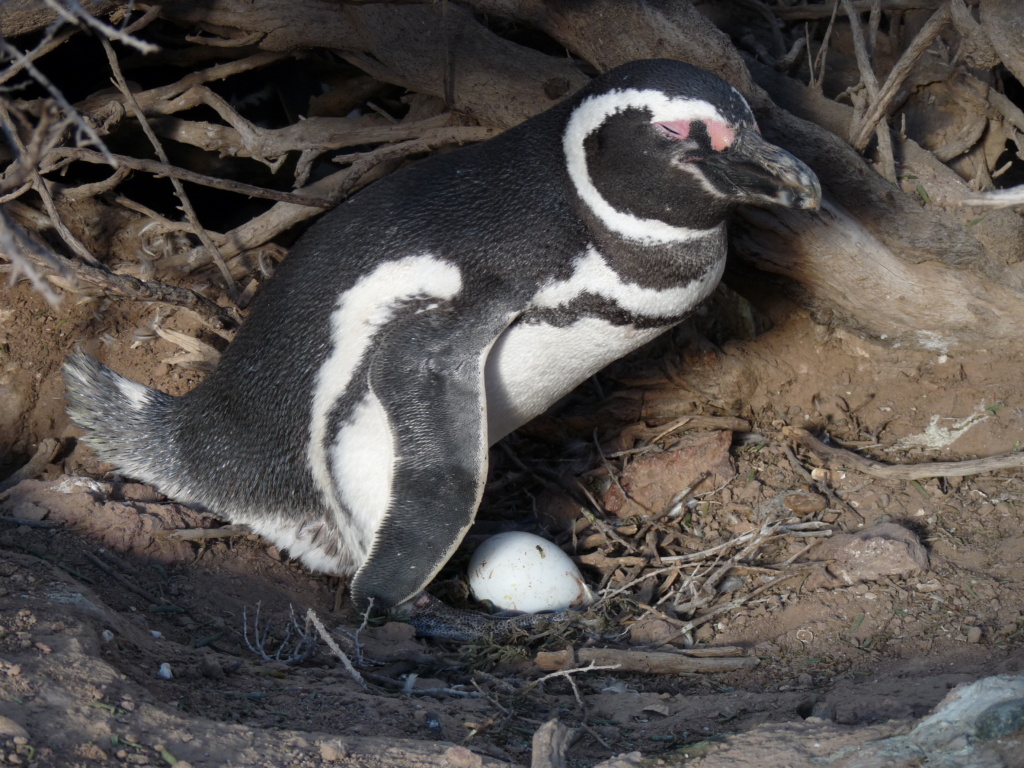
In October, females typically lay two eggs in burrows or under bushes. Eggs are similar in size to goose eggs with hard shells to reduce breakage. Chicks hatch after 39-42 days of incubation.
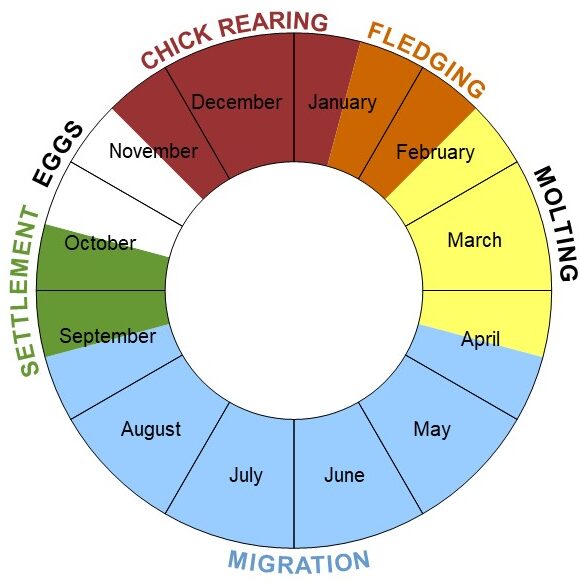
The species has been in sustained decline since 1989, although the numbers fluctuate in different parts of the penguin’s range.
The main threats are at sea, including climate variation, fishing bycatch and entanglement, competition for prey, and petroleum pollution.